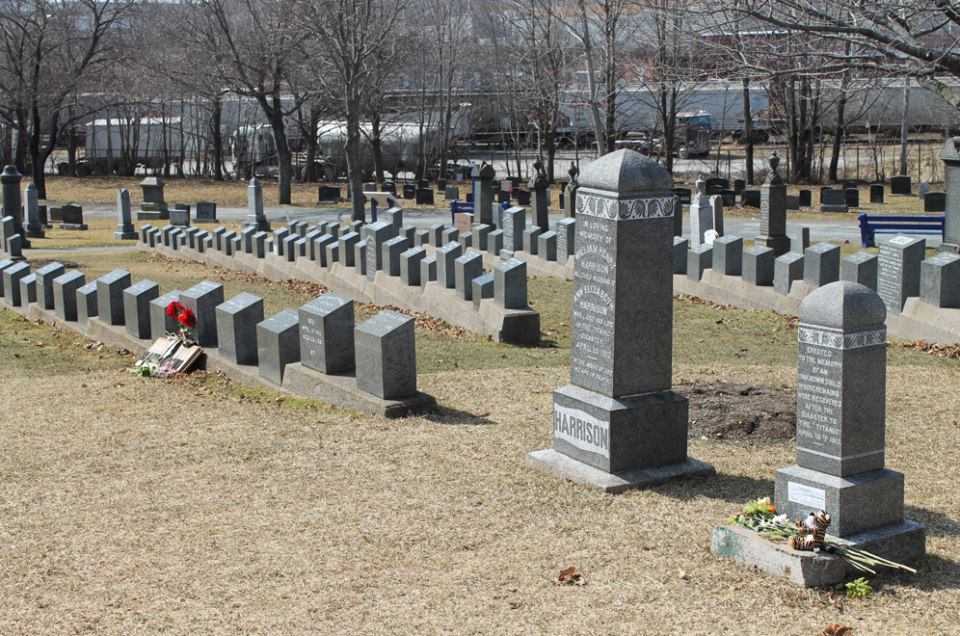When the Titanic sank in 1912, three ships from Halifax were sent to recover the dead, and consequently the city has a strong connection to the disaster.
Many of the victims are buried here, and there are artifacts from the ship at several locations in the city. Canadian director James Cameron filmed his movie about the distaster, Titanic, in Halifax, and lovers of the film may recognize locations around the city. If you are interested in the history of the Titanic, there are several locations in Halifax that you should visit.
Fairview Lawn Cemetery
Here you’ll find a memorial and grave markers for the 123 victims from the Titanic disaster that are interred in the cemetery (there are others at a couple of other cemeteries in the city, but the majority of the victims were buried here). Most of the markers are small grey granite stones inscribed with the name of the victim, if the victim was known, if the victim was unknown they were given a number.
Some families donated money for bigger grave markers, and there is a large marker for the “unknown child” who was unidentified but buried with funds supplied by the sailors who rescued his tiny body (which has since been identified by forensic testing). The marker for J Dawson has been much adorned by fans of the Titanic Movie, who assumed that is was the grave of Jack Dawson, the hero of the film, but it is for Joseph Dawson, an Irishman who was part of the ships crew.
(To get to the cemetery, head North on Connaught Avenue and you’ll see the entrance just before hitting Windsor Street.)
The Maritime Museum of the Atlantic
There is a substantial collection of Titanic artifacts on display here, including some extra tragic ones, such as the shoes of the unknown child and mortuary bags used for the victims. You can lounge in a replica of the deck chairs used on the ship, and learn why the engineers that built the Titanic thought it unsinkable and the event that led to it’s demise. There are many interesting wooden artifacts that were rescued from the wreckage that illustrate how opulent the first class sections of the ship were.
The Bedford Institute of Oceanography
This research facility offers free guided tours, during which time you get to view a model of how the Titanic looks now as it rests at the bottom of the ocean, as well as a collection of pictures from the 1991 diving expedition to explore the wreckage. There are other interesting aspects to the tour, where you’ll learn about conservation of the marine environment and be allowed to handle marine creatures in a series of touch tanks.
